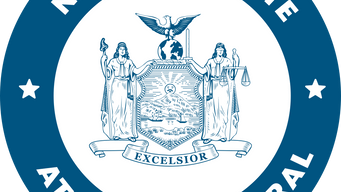By Leonard L. Gordon & Kaelyne Yumul Wietelman
In early July the Staff of the Federal Trade Commission (FTC) issued new guidance on how to approach Made in USA claims. The agency says the new guidance will help businesses comply with its “all or virtually all” standard, including how to make disclosures qualifying a Made in USA claim. The new guidance is “Staff’s” view, which means it is not formally approved by the commissioners.
Under an Enforcement Policy Statement issued in 1997, the FTC stated that to make a Made in USA claim, “all or virtually all” of a product had to be made in the USA. In 2021, the FTC finalized the Made in USA Labeling Rule, which codified the “all or virtually all” standard for labels on products. Under the labeling rule, regardless of industry or type of product, marketers are now subject to civil penalties if they improperly use an unqualified Made in USA claim on the product label.
Apart from automobiles, textiles, wool, and fur products, marketers are not required to disclose the amount of U.S. content in their products. However, if marketers choose to make claims about the amount of U.S. content in their products, they must comply with the Made in USA labeling Rule for both express and implied claims made on the product label.
Similarly, Made in USA claims made beyond the product label must not be deceptive about the product origin under Section 5 of the FTC Act. Express claims can vary from “Made in USA” to “Built/Manufactured in USA.” Implied claims depend on the overall impression of an advertisement, a label, or promotional materials. For example, U.S. symbols like the flag, maps, or other references to U.S. locations could convey a Made in USA claim.
The substantiation requirements for Made in USA claims have not changed. Marketers and manufacturers must still have an ongoing, reasonable basis that “all or virtually all” of the product is made in the U.S. To satisfy this standard, the FTC will look at whether the product’s final assembly or processing took place in the U.S., how much of the product’s total manufacturing costs occur in the U.S., where the parts originate, how far removed any foreign content is from the finished product, and the importance of the foreign content to the product’s form or function.
If a manufacturer/marketer cannot meet the “all or virtually all” threshold, they can consider making a qualified Made in USA claim that discloses the product is not entirely of U.S. origin, such as advertising that a product is made of “70% U.S. content” or “Made in USA of U.S. and imported parts.”
These disclosures should be clear and avoid implying that the product is made of more domestic parts than it is. The guidance specifically warns against vague claims, such as “Created” or “Produced” in USA, as these could mislead a consumer into believing a product has more U.S. content than it does. Additionally, any claim that references “U.S. parts” is subject to the “all or virtually all” substantiation standard.
Finally, to make “Assembled in USA” claims, the marketer must have a reasonable basis for claiming that the product was “substantially transformed” in the U.S. Though the guidance does not provide much insight into this standard, it warns that a “simple screwdriver” transformation will not satisfy the requirement. For example, if all the product’s parts are shipped from all over the world, but it undergoes only a minimal transformation or requires only a screwdriver to assemble all the parts in the U.S., then the marketer should avoid making an “Assembled in USA” claim.
It is important to note that the FTC guidance is not binding on the commission, though it is a strong indicator of how the FTC views these requirements.
For more insights into advertising law, bookmark our All About Advertising Law blog and subscribe to our monthly newsletter. To learn more about Venable’s Advertising Law services, click here or contact one of the authors. And listen to the Ad Law Tool Kit Show—a new podcast from Venable.





